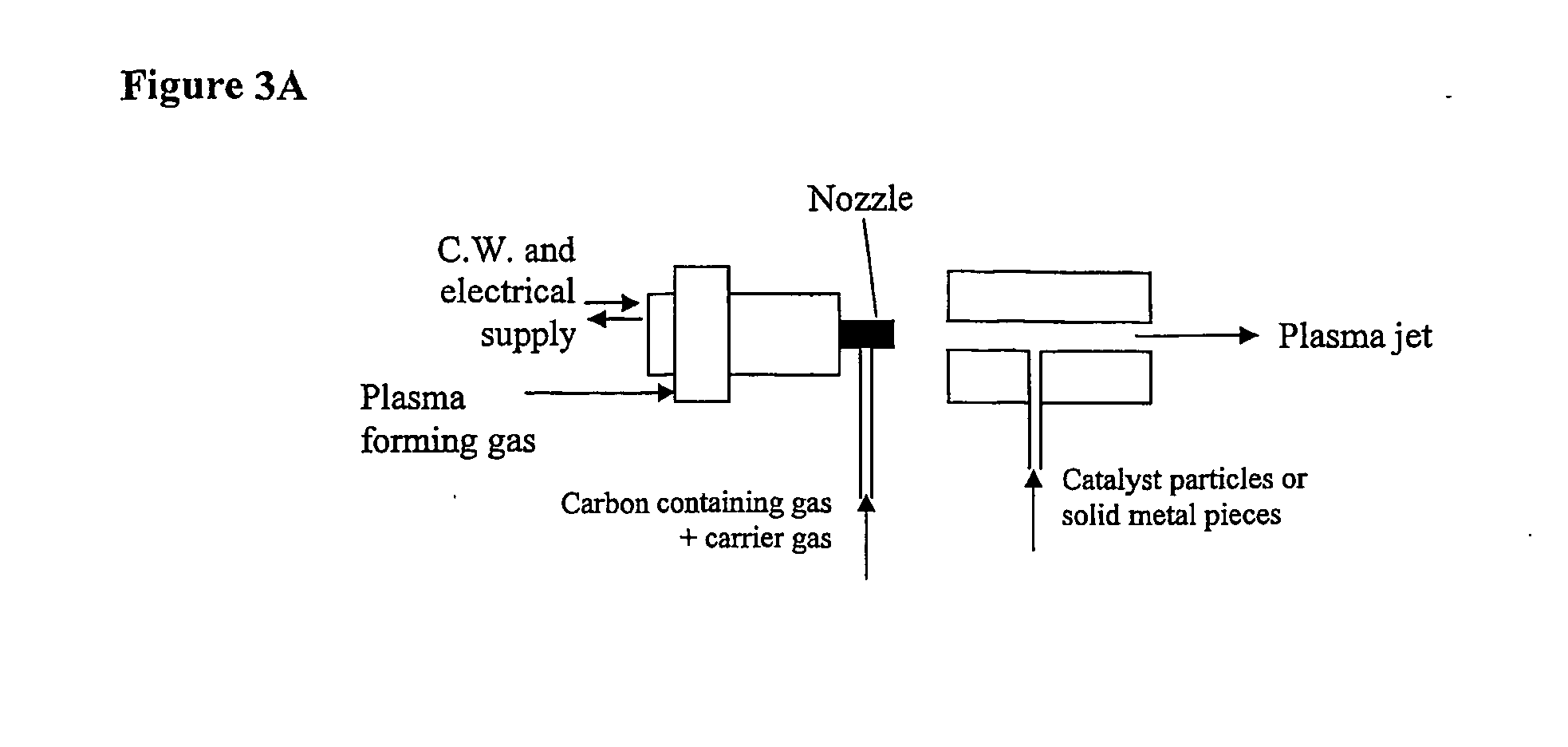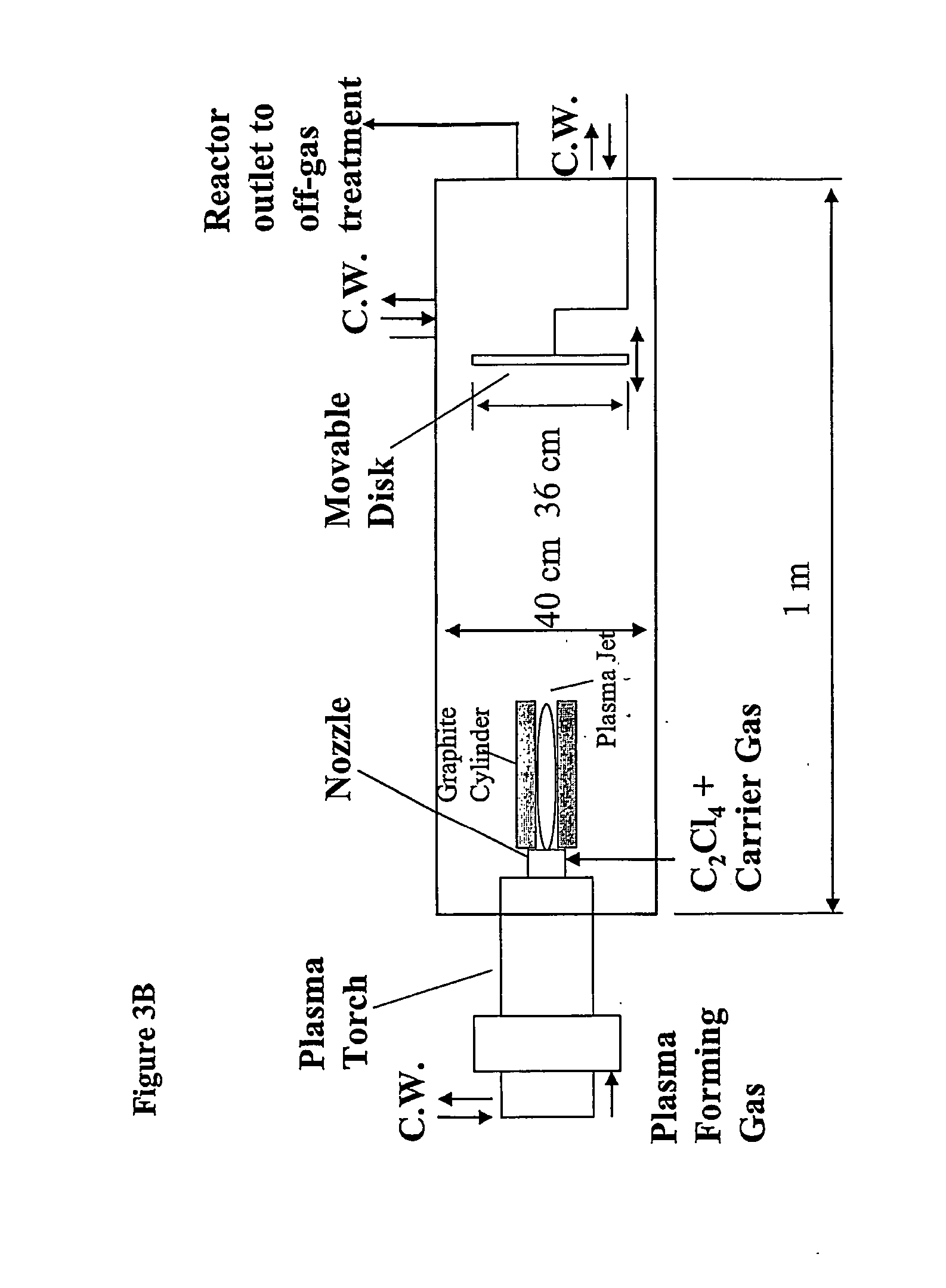Method for producing carbon nanotubes using a dc non-transferred thermal plasma torch
a non-transferred thermal and plasma torch technology, applied in the direction of material nanotechnology, material nanotechnology, energy-based chemical/physical/physicochemical processes, etc., can solve the problem of limited scale up possibility for large yield, rapid movement of materials to tons/month requirements, and demand for cnt, etc. problem, to achieve the effect of adding to the scale up potential
- Summary
- Abstract
- Description
- Claims
- Application Information
AI Technical Summary
Benefits of technology
Problems solved by technology
Method used
Image
Examples
Embodiment Construction
BRIEF DESCRIPTION OF THE DRAWINGS
[0013] The accompanying drawings are used for purposes of illustrating the invention only and should not be used to construe the claims in a limiting fashion.
[0014]FIG. 1 is a schematic illustration of a high enthalpy plasma torch to which is attached a water-cooled nozzle for injection of a carbon-containing gas feed;
[0015]FIG. 2 is a schematic illustration of a plasma torch wherein a nozzle is shown that includes separate injection lines for carbon-containing gas and a carrier gas and for catalyst particles and a carrier gas;
[0016]FIG. 3A is a schematic illustration of a portion of a plasma torch and a nozzle which provides for metal catalyst injection downstream of the plasma torch nozzle assembly;
[0017]FIG. 3B is a schematic illustration of a high enthalpy plasma torch to which is attached a water-cooled nozzle for injection of a carbon-containing gas feed and wherein a hollow graphite cylinder is provided within the reactor;
[0018]FIG. 4 is ...
PUM
 Login to View More
Login to View More Abstract
Description
Claims
Application Information
 Login to View More
Login to View More - R&D
- Intellectual Property
- Life Sciences
- Materials
- Tech Scout
- Unparalleled Data Quality
- Higher Quality Content
- 60% Fewer Hallucinations
Browse by: Latest US Patents, China's latest patents, Technical Efficacy Thesaurus, Application Domain, Technology Topic, Popular Technical Reports.
© 2025 PatSnap. All rights reserved.Legal|Privacy policy|Modern Slavery Act Transparency Statement|Sitemap|About US| Contact US: help@patsnap.com



